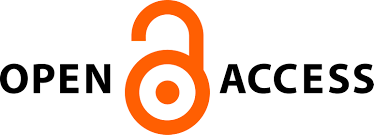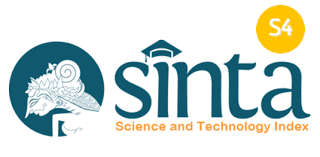UJI TOKSISITAS AKUT LIMBAH PABRIK SARUNG TENUN PADA IKAN MUJAIR (Tilapia mossambicus)
Main Article Content
Abstract
Wastewater of sarong factory contains color substrat that has a high concentration of COD and TSS. It also contains heavy metal Chrom (Cr). The wastewater didn’t treatment and flow to river directly. By doing toxicity test, the toxicity of the wastewater from the sarong factory would be identified. The toxicity of the wastewater from the sarong factory was identified by mortality procentage of Mujair fish (Tilapia mossambicus), which was the experiment species. The method of the experiment is by using an acute toxicity test principle, whith a range finding test as a preliminary test. From those test, the researcher would found the lethal concentration-50% (LC-50) of the population species, wich one that value is the cocentration of toxic waste. In this research, the residu of Cr in fishes are measurement using Ashing Furnice method. The changes of the gills also are detected using hispathology of the gills method. Based on the experiment done, the 96 hour LC-50 for Mujair fish is 0,945%±0,045% with avarage of COD value: 23,86 mg/l, TSS value 33,28 mg/l, heavy metal Cr total value 0,06 mg/l and and dye substrat value 19,74. Dye substrat on that Mujair fish contains azo dye value 1,55 mg/l, quinon dye value 144 mg/l dan naftol dye value 3,36 mg/l. Mortality of organisme experiment caused by dye substrat contains azo dyes. The existence of the sarong factory wastewater in the fish’s body was also changed the hispathology of the gills in the form of hyperplasia lamella.
Downloads
Article Details
Submission of a manuscript to Jurnal Purifikasi means that the work has never been published in another journal and is not under consideration for publication elsewhere. The author hereby agrees to submit the copyright of the manuscript and its contents to Jurnal Purifikasi, if accepted for publication. Accepted manuscripts will be published in printed form where the ISSN is bound in printed form, not in online form (pdf). Authors are not allowed to publish their work in other forms (journals) without permission from the Jurnal Purifikasi manager.
By submitting a manuscript, the author is deemed to know all the rights and obligations attached to each manuscript.








